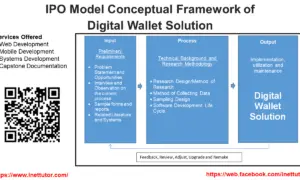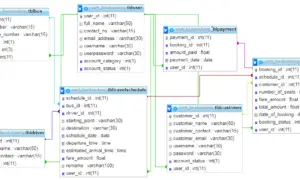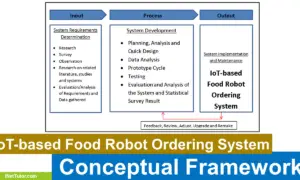Conceptual Framework of E-learning Application
This tutorial will walk you through the process of developing a conceptual framework for your capstone project, E-learning Application. For the conceptual framework of this inquiry, the input, process, output (IPO) model was adopted.
About the Project
Table of Contents
The capstone project entitled “E-learning Application” is an online platform that will allow the Integrated School community to conduct and continue the learning process despite of the current situation we have.
E-learning applications, also known as online learning or digital learning, have become increasingly important in recent years. These applications provide a convenient and flexible way for people to access education and training, regardless of their location or schedule.
One of the main advantages of e-learning is that it can be accessed from anywhere with an internet connection, making it more accessible for people who live in remote areas or who have mobility issues. It also allows for self-paced learning, allowing students to learn at their own pace and on their own schedule.
Another important aspect of e-learning is the ability to provide interactive and engaging learning experiences. Online learning platforms can include multimedia such as videos, audio, and interactive simulations, which can make the learning process more engaging and effective.
E-learning applications also allow for the creation of virtual classrooms and online communities, which can provide students with a sense of connection and support. This can be especially beneficial for students who are studying online or who are unable to attend traditional classes in person.
E-learning also offers a cost-effective way to access education and training, as it eliminates the need for expensive classroom facilities and materials. This can make education and training more affordable for individuals and organizations.
The purpose of this study is to provide an IT based solution in the field of education. The researchers will create and develop an eLearning platform that will allow their faculty members to upload their lecture material and assess their students using the test and exam module of the project. In addition, the application is very helpful on the student side since they can now view and download their modules and take their examinations in their home.
In summary, e-learning applications are important because they provide a convenient, flexible and cost-effective way to access education and training. They also offer interactive and engaging learning experiences and provide opportunities for virtual classrooms and online communities.
Objective of the Study
- Develop the following system features:
- Student information module
- Faculty information module
- Subjects’ module
- Test and Exam module
- Lecture materials banking module
- The study aimed to evaluate the system in terms of functionality, reliability, usability, and efficiency based on McCall’s Software Quality Model.
- Moreover, this project aimed to determine the level of satisfaction on the end-users based on ISO/IEC 25010 Quality in use Model
Conceptual Framework Diagram
The conceptual structure for the E-learning Application capstone project is depicted in the graphic above. It is based on the IPO model, also known as the input, process, and output model.
What is Conceptual Framework?
A conceptual framework is a structured approach used in research to guide the collection and analysis of data. It is a set of concepts, assumptions, and ideas that shape the way researchers understand and interpret their research problem and data. It provides a theoretical foundation for the study and helps to organize and guide the research process.
The conceptual framework is typically presented in a diagram or flowchart, which illustrates the relationship between different concepts and variables in the study. It serves as a guide for the researcher, helping them to stay focused on the research problem and to identify the key variables and concepts that need to be studied.
The benefit of having a conceptual framework in research is that it helps to ensure that the study is well-designed and that the data collected is relevant and meaningful. It helps to ensure that the research is based on sound theoretical principles, and that the findings are interpretable and useful.
A conceptual framework also helps to identify any gaps in the literature and to set clear research objectives. It helps to keep the researcher on track and to ensure that the study is conducted in a logical and systematic way. This can help to increase the credibility and reliability of the research findings.
It also helps to identify the potential limitations of the research and to ensure that the conclusions drawn from the data are valid and supported by the evidence.
In summary, a conceptual framework is a structured approach used in research to guide the collection and analysis of data. It provides a theoretical foundation for the study, helps to organize and guide the research process, and ensures that the research is well-designed, relevant and meaningful. It helps to identify any gaps in the literature, set clear research objectives, and increase the credibility and reliability of the research findings.
Input
This is where the researchers can use their prior understanding of systems analysis, design, and project management to good use.
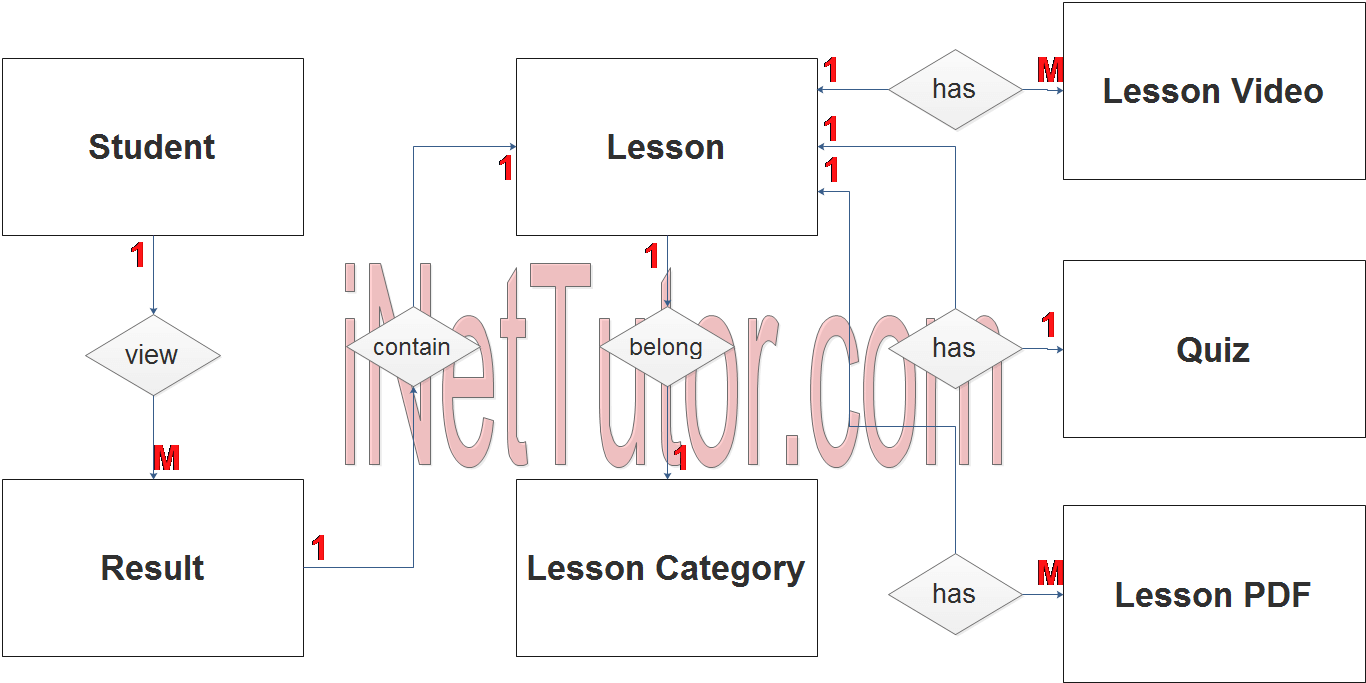
Process
The researchers will select and choose the optimum software development life cycle model for the project in this section.
Data collection
The researcher for this study gathered all conceivable demands for system development at this phase, including requirements gathered from the system’s end users. The survey questionnaire was prepared by the researcher and evaluated by specialists. The surveys were designed to collect data in order to improve the performance of the proposed system in the future for general community use.
Data analysis
Consultation is used to gather requirements from end users and generate ideas. We also distributed a survey questionnaire that was authorized by three experts (IT Expert, English Grammarian, and Researcher). And these questionnaires functioned as our data gathering tool, measuring the performance of the manual system that served as the foundation for the development of our proposed system.
Design of a System
The prototype and planned system features are developed at this phase. A concrete understanding of how the system will function is also created. We identify all of the necessary system inputs and outputs, as well as the design of data, processes, and interfaces, in this part.
Programming
In this stage, we materialized the whole idea of the software to be designed. We created the program for the proposed system. The actual coding of the software is based on the system design and the requirements needs to be met. This is where the proper execution of the previous stages ensures a smooth implementation.
Program testing
In this phase, the researcher performed series of testing to check for any possible problems may arise during implementation and operation of the software and if the specification has been met.
Acceptance of the system
This is the final stage, where the system is installed and will be maintained after it has been implemented. The hardware and software requirements for the correct installation of the system must be considered. As part of the acceptance of this phase, the client must undergo user training to become thoroughly acquainted with the entire system.
Output
The project is brought to life and implemented in the actual world after all of the relevant procedures have been accomplished. A new project, E-learning Application, is formed, and it will be maintained to ensure the project’s long-term success.
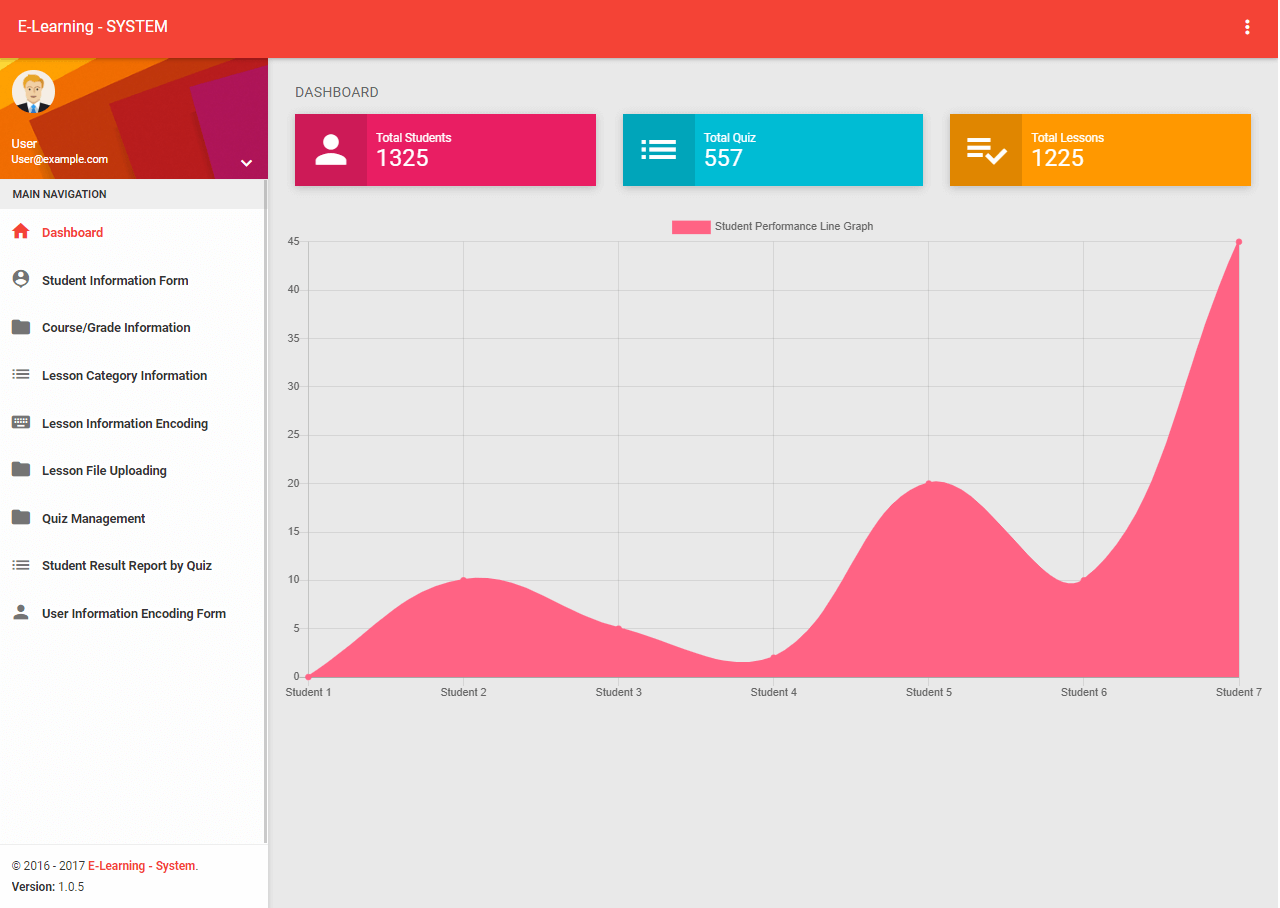
Summary
This research article focuses on the conceptual structure of the E-learning Application. The input, process, and output (IPO) model serves as the conceptual framework for the investigation. The input phase includes defining user requirements, reviewing related literature, programming abilities, systems analysis design experience, and project management principles. When the input phase is finished, the researchers will move on to the process stage. The Software Development Life Cycle (SDLC) approach is employed (SDLC). The SDLC technique includes data collection, data analysis, system design, programming, testing, and system acceptance. The final stage before the developed system is implemented and used is the output phase. The researchers will be in charge of the newly formed venture.
Readers are also interested in:
ELearning System for Math using PHP, MySQL and Bootstrap
Elearning System Database Design
You may visit our Facebook page for more information, inquiries, and comments. Please subscribe also to our YouTube Channel to receive free capstone projects resources and computer programming tutorials.
Hire our team to do the project.
